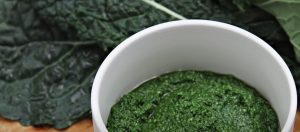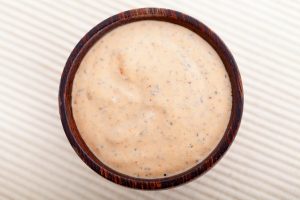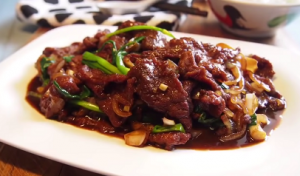This homemade salsa verde recipe brings vibrant flavors to your table with roasted tomatillos and spicy jalapeños. Perfect for topping tacos or as a dip, it's a fresh and zesty addition to any meal.
Not everyone may have tomatillos on hand, which are a type of green, husk-covered fruit that add a tangy flavor to the salsa. Jalapeños provide the heat, but feel free to adjust the number based on your spice tolerance. Make sure to pick up fresh cilantro and avocados for the best taste.
Ingredients for Homemade Salsa Verde Recipe
Tomatillos: These green, husk-covered fruits are tangy and essential for an authentic salsa verde.
Jalapeños: These peppers add heat to the salsa. Adjust the quantity based on your spice preference.
White onion: Adds a bit of sharpness and crunch to the salsa.
Cilantro leaves: Fresh cilantro gives the salsa its distinctive herbal flavor.
Lime juice: Provides acidity and brightness, enhancing the overall flavor.
Salt: Balances the flavors and enhances the taste of the salsa.
Avocados: Adds creaminess and richness to the salsa, making it smooth and delicious.
One reader, Anthiathia Nolan says:





This homemade salsa verde recipe is fantastic! The roasted tomatillos and jalapeños add a smoky depth, while the fresh cilantro and lime juice bring a zesty brightness. Adding avocado makes it creamy and irresistible. Perfect for tacos!
Techniques Required for Making Homemade Salsa Verde
How to preheat the broiler: Set your oven to the broil setting and adjust the rack so it is about 4 inches below the heat source. How to broil tomatillos and jalapeños: Place the tomatillos and jalapeños on a rimmed baking sheet, then broil them until they have blackened spots, flipping them halfway through. How to use a food processor or blender: Combine ingredients in the food processor or blender and pulse until the mixture is mostly smooth, scraping down the sides as necessary. How to season to taste: Add additional lime juice and salt if desired, tasting as you go to achieve the preferred flavor. How to blend in avocados: Once the salsa has cooled down, add diced avocados and blend until smooth.
How To Make Homemade Salsa Verde
Make this iconic salsa verde dip for your next taco meal! This Mexican dip is tangy, spicy, and perfect on just about any savory dish.
Serves:
Ingredients
- 1½lbstomatillosabout 12 medium, husked and rinsed
- 2medium jalapeños
- ½cupwhite onionchopped, about ½ medium onion
- ¼cupfresh cilantro leavespacked
- 2tbsplime juice1 to 2 medium limes, juiced, to taste
- 1tspsaltto taste
- 2avocadosdiced, optional
Instructions
-
Preheat the broiler with a rack about 4 inches below the heat source.
-
Place the tomatillos and jalapeños on a rimmed baking sheet, then broil for 5 minutes until they have blackened spots.
-
Remove the baking sheet from the oven.
-
Carefully flip over the tomatillos and jalapeños with tongs, then broil for 4 to 6 more minutes, until the tomatillos are splotchy-black and blistered.
-
In a food processor or blender, combine the chopped onion, cilantro, lime juice and ½ teaspoon salt.
-
Carefully transfer the hot tomatillos and jalapeños with any juices into the food processor or blender.
-
Pulse until the mixture is mostly smooth and no large chunks of tomatillo remain, scraping down the sides as necessary.
-
Season to taste with additional lime juice and salt, if desired.
-
Let the salsa cool down.
-
Blend in 1 to 2 diced avocados.
-
Serve over tacos, and enjoy!
Recipe Notes
The salsa will be thinner at first, but will thicken up after a few hours in the refrigerator, due to the naturally occurring pectin in the tomatillos.
Nutrition
- Calories: 363.87kcal
- Fat: 26.44g
- Saturated Fat: 3.82g
- Monounsaturated Fat: 16.19g
- Polyunsaturated Fat: 4.08g
- Carbohydrates: 34.42g
- Fiber: 16.90g
- Sugar: 13.80g
- Protein: 6.37g
- Sodium: 946.77mg
- Calcium: 50.42mg
- Potassium: 1606.69mg
- Iron: 2.71mg
- Vitamin A: 39.27µg
- Vitamin C: 67.70mg
Technique Tip for Achieving the Perfect Salsa Verde Consistency
Roasting the tomatillos and jalapeños under the broiler adds a smoky depth to the salsa verde. Make sure to keep an eye on them to avoid burning, and use tongs to flip them carefully to ensure even charring. This step enhances the flavor profile significantly.
Time-Saving Tips for Making Salsa Verde
Pre-roast in bulk: Roast extra tomatillos and jalapeños ahead of time and store them in the fridge for quick use.
Use a food processor: A food processor speeds up chopping and blending, saving you manual effort.
Pre-chop ingredients: Pre-chop onions and cilantro and store them in airtight containers.
Lime juice in advance: Squeeze lime juice ahead of time and keep it in the fridge for easy access.
Skip cooling: If in a hurry, blend the avocados directly with the hot mixture to save cooling time.
Substitute Ingredients For Homemade Salsa Verde Recipe
tomatillos - Substitute with green tomatoes: Green tomatoes have a similar tartness and texture, making them a good alternative in salsa verde.
tomatillos - Substitute with canned tomatillos: If fresh tomatillos are unavailable, canned tomatillos can be used, though they may be slightly softer.
jalapeños - Substitute with serrano peppers: Serrano peppers have a similar heat level and flavor profile, making them a suitable replacement.
jalapeños - Substitute with poblano peppers: Poblano peppers are milder but can add a smoky flavor to the salsa.
white onion - Substitute with yellow onion: Yellow onions have a similar texture and slightly sweeter flavor, which works well in salsa.
white onion - Substitute with red onion: Red onions add a bit of color and a slightly sharper taste to the salsa.
fresh cilantro leaves - Substitute with parsley: Parsley can provide a fresh, herbaceous note, though it lacks the distinctive cilantro flavor.
fresh cilantro leaves - Substitute with mint leaves: Mint leaves offer a refreshing twist, though they will change the flavor profile significantly.
lime juice - Substitute with lemon juice: Lemon juice provides a similar acidity and brightness to the salsa.
lime juice - Substitute with vinegar: A splash of vinegar can add the necessary acidity if citrus is unavailable.
salt - Substitute with soy sauce: Soy sauce can add a salty and umami flavor, though it will alter the color and taste slightly.
salt - Substitute with sea salt: Sea salt can be used as a direct replacement for regular salt, offering a slightly different mineral taste.
avocados - Substitute with Greek yogurt: Greek yogurt can add creaminess and a tangy flavor, though it lacks the richness of avocados.
avocados - Substitute with sour cream: Sour cream provides a similar creamy texture and tanginess, making it a good alternative.
Presenting Your Homemade Salsa Verde
Use a pristine white plate: The clean, white background will make the vibrant colors of the salsa verde pop, creating a visually appealing contrast.
Create a base layer: Spread a thin layer of the salsa verde on the plate using the back of a spoon to create a smooth, even base.
Add texture with avocado slices: Thinly slice the avocados and fan them out artistically on top of the salsa verde, adding both texture and visual interest.
Garnish with fresh herbs: Sprinkle finely chopped cilantro leaves over the dish for a burst of color and freshness.
Incorporate edible flowers: Place a few small, edible flowers around the plate to elevate the presentation and add a touch of elegance.
Serve with homemade tortilla chips: Arrange a few homemade tortilla chips around the edge of the plate, providing a crunchy contrast to the creamy salsa verde.
Drizzle with lime juice: Just before serving, lightly drizzle fresh lime juice over the entire dish to enhance the flavors and add a glossy finish.
Add a touch of sea salt: Sprinkle a pinch of flaky sea salt over the avocados to enhance their flavor and add a subtle crunch.
Use microgreens for a final touch: Place a small cluster of microgreens in the center of the plate for an additional layer of sophistication and a pop of green.
Essential Tools for Making Salsa Verde at Home
Broiler: Used to char and blister the tomatillos and jalapeños, bringing out their smoky flavors.
Rimmed baking sheet: Holds the tomatillos and jalapeños while they broil, preventing juices from spilling over.
Tongs: Essential for flipping the hot tomatillos and jalapeños safely.
Food processor: Blends the ingredients into a smooth salsa, ensuring all flavors are well combined.
Blender: An alternative to the food processor for blending the salsa ingredients.
Knife: Used for chopping the onion and dicing the avocados.
Cutting board: Provides a stable surface for chopping the onion and dicing the avocados.
Measuring cups: Ensures accurate measurement of the onion and cilantro.
Measuring spoons: Used to measure the lime juice and salt precisely.
Mixing bowl: Useful for holding the diced avocados before blending them into the salsa.
Storing and Freezing Homemade Salsa Verde
To store the salsa verde, transfer it to an airtight container or jar and refrigerate for up to 5-7 days. The flavors will meld and improve over time, making it even more delicious.
If you have a large batch of salsa verde and want to preserve it for longer, freezing is a great option. Pour the salsa into freezer-safe containers or resealable bags, leaving about an inch of headspace to allow for expansion.
Label the containers or bags with the date and contents, so you can easily keep track of your frozen salsa verde.
When you're ready to use the frozen salsa, thaw it in the refrigerator overnight. Give it a good stir before serving, as the ingredients may separate slightly during the freezing process.
Frozen salsa verde can be stored for up to 6 months without significant loss of quality. However, for the best flavor and texture, try to use it within 3-4 months.
If you've added avocado to your salsa verde, it's best to consume it fresh within a day or two. Avocado doesn't freeze well and may affect the texture of the salsa once thawed.
To prevent the avocado from browning in leftover salsa, place a piece of plastic wrap directly on the surface of the salsa, pressing out any air bubbles. This will minimize oxidation and keep your salsa looking fresh and green.
Random Fact about Salsa Verde
A unique aspect of this salsa verde recipe is the inclusion of avocados. Traditional salsa verde typically doesn't include avocados, but their addition provides a creamy texture and rich flavor, making the salsa more versatile and delicious.
Is Making Salsa Verde at Home Cost-Effective?
This homemade salsa verde recipe is quite cost-effective for a household. The main ingredients like tomatillos, jalapeños, onion, cilantro, and lime are generally affordable, and even the addition of avocados doesn't significantly raise the cost. For a household of 4 people, the approximate cost would be around $8-$10. Considering the fresh and vibrant flavors it brings to the table, this recipe scores a solid 8 out of 10 in terms of cost-effectiveness.
Is Salsa Verde Healthy or Unhealthy?
This homemade salsa verde recipe is a healthy and nutritious choice. The main ingredients, tomatillos and jalapeños, are low in calories and packed with vitamins and minerals. Tomatillos are an excellent source of vitamin C, which supports a healthy immune system, while jalapeños contain capsaicin, a compound known for its anti-inflammatory properties. The addition of white onion and cilantro provides extra flavor and nutrients, such as vitamin K and antioxidants. Lime juice not only adds tanginess but also helps the body absorb iron from other foods. Avocados, rich in heart-healthy monounsaturated fats, fiber, and potassium, make this salsa a well-rounded and satisfying condiment.
To further enhance the nutritional value of this salsa verde, consider the following suggestions:
- Use more cilantro to increase the intake of vitamins A, C, and K, as well as antioxidants
- Add garlic, which has been shown to have anti-inflammatory and immune-boosting properties
- Experiment with other herbs and spices, such as cumin or oregano, to boost flavor and provide additional health benefits
- Serve the salsa with a variety of colorful vegetables, such as bell peppers or carrots, to increase the overall nutrient density of your meal
Editor's Thoughts on This Salsa Verde Recipe
This homemade salsa verde recipe is a delightful blend of roasted tomatillos and jalapeños, offering a smoky depth that pairs beautifully with the freshness of cilantro and lime. The addition of avocados adds a creamy texture, making it perfect for tacos or as a dip. The broiling process enhances the flavors, creating a complex and satisfying salsa. Adjusting the lime juice and salt to taste ensures a balanced finish. Overall, it's a vibrant and versatile condiment that can elevate a variety of dishes.
Enhance Your Homemade Salsa Verde Recipe with These Unique Side Dishes:
Alternative Recipes Similar to Salsa Verde
Suggested Main Courses and Desserts to Pair with Salsa Verde
Why trust this Homemade Salsa Verde Recipe:
This homemade salsa verde recipe is a must-try for its authentic flavors and simplicity. The tomatillos and jalapeños are broiled to perfection, adding a smoky depth to the salsa. Fresh ingredients like cilantro and lime juice ensure a vibrant taste, while the addition of avocados gives it a creamy texture. Trust this recipe for its balance of flavors and easy-to-follow steps, making it perfect for any occasion.
Was this page helpful?
Have your own special recipe to share? Submit Your Recipe Today!












